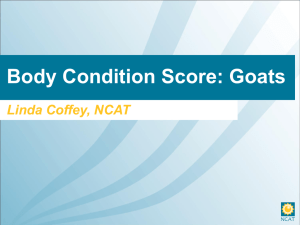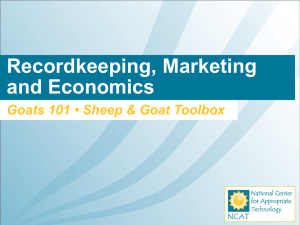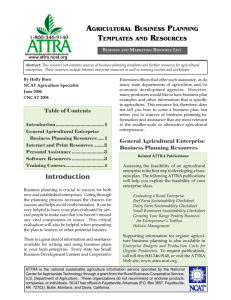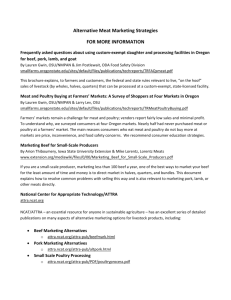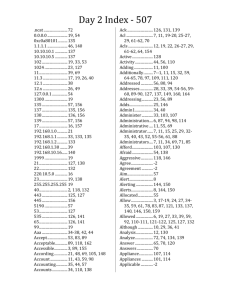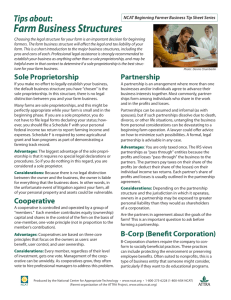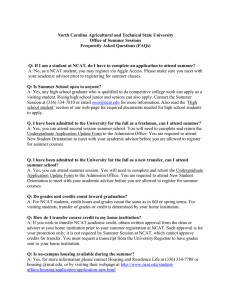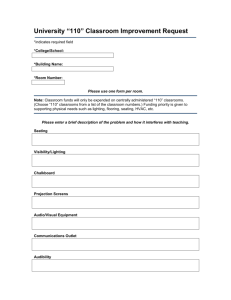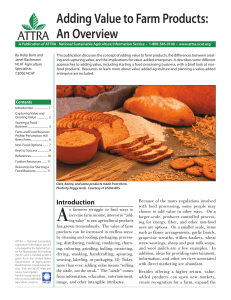Institutional Markets
advertisement
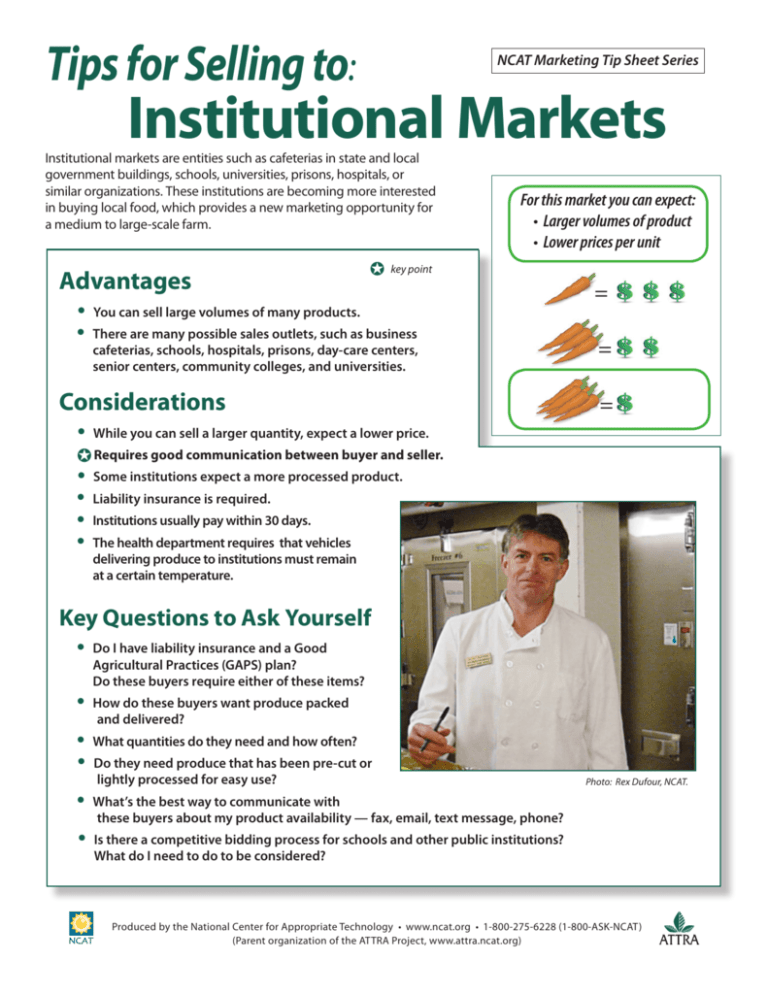
Tips for Selling to: NCAT Marketing Tip Sheet Series Institutional Markets Institutional markets are entities such as cafeterias in state and local government buildings, schools, universities, prisons, hospitals, or similar organizations. These institutions are becoming more interested in buying local food, which provides a new marketing opportunity for a medium to large-scale farm. Advantages For this market you can expect: • Larger volumes of product • Lower prices per unit J key point • You can sell large volumes of many products. • There are many possible sales outlets, such as business cafeterias, schools, hospitals, prisons, day-care centers, senior centers, community colleges, and universities. Considerations • While you can sell a larger quantity, expect a lower price. J Requires good communication between buyer and seller. • Some institutions expect a more processed product. • Liability insurance is required. • Institutions usually pay within 30 days. • The health department requires that vehicles delivering produce to institutions must remain = = = = at a certain temperature. Key Questions to Ask Yourself o I have liability insurance and a Good • DAgricultural Practices (GAPS) plan? Do these buyers require either of these items? do these buyers want produce packed • How and delivered? • What quantities do they need and how often? they need produce that has been pre-cut or • Dolightly processed for easy use? • What’s the best way to communicate with these buyers about my product availability — fax, email, text message, phone? s there a competitive bidding process for schools and other public institutions? • IWhat do I need to do to be considered? Photo: Rex Dufour, NCAT. Produced by the National Center for Appropriate Technology • www.ncat.org • 1-800-275-6228 (1-800-ASK-NCAT) (Parent organization of the ATTRA Project, www.attra.ncat.org) Tips for Selling to Institutional Markets J key point • Research the institution. Find out who makes buying decisions. J ­ Know what the buyer requires from you. ­— Produce quality standards? ­— Type of pack or size of product? — Specific delivery times and number of deliveries per week? ­ — Liability insurance and for how much? ­— A Good Agricultural Practices (GAPs) plan? J Maintain consistent volumes and quality. local organizations such as universities, nonprofits, and Food Policy Councils • Wtoorkhelpwithreduce barriers for farmers selling to local institutions. • Consider developing a Good Agricultural Practices (GAPs)/Food Safety Plan to allow easier access to these markets. • Find out if the buyer will purchase imperfect, blemished or small produce for a lower price. Resources ATTRA Publications • Prices vary for individual publications, many are free. An inexpensive subscription to ATTRA will give you access to all 400+ publications and databases. www.attra.ncat.org — New Markets for Your Crops, 2008 (also available in Spanish and as a Spanish-language audio file) — Illustrated Guide to Growing Safe Produce on Your Farm, 2010 (also available in Spanish) elling to Institutions by Bill Wright, University of Wisconsin Cooperative Extension, Emerging Agricultural Markets • STeam, 2007. A 4-page PDF on how to get started and do well selling to institutions. www.uwex.edu/ces/agmarkets/publications/documents/A3811-19.pdf arm to Hospital: Supporting Local Agriculture and Improving Health Care. This 6-page brochure explains farm-to• Fhospital and why it’s important, as well as how hospitals can improve their food, and how growers can approach institutions. www.foodsecurity.org/uploads/F2H_Brochure-Nov08.pdf to College Website Resource List. Useful for anyone interested in learning more about getting local produce • Farm into institutions. The lists are broken down by the intended audience such as farmers, food professionals, student organizers, etc. http://farmtocollege.org/resources Food Security Liability & Food Safety (in English and Spanish). This short brochure summarizes some • Cofommunity the issues regarding food safety when selling to institutional markets. It gives the reader information on what to expect for insurance requirements and how to better protect your farm. www.foodsecurity.org/insurance.htm The development of this material was supported through USDA/NIFA/OASDFR www.outreach.usda.gov/oasdfr Tips for Selling to: Institutional Markets © 2012 National Center for Appropriate Technology—NCAT By Marisa Alcorta, Rex Dufour and Tammy Hinman Production: Karen Van Epen This publication is available on the Internet at www.attra.ncat.org IP 427, Slot 425, Version 122612
